Command Of Evidence Test-2 - SAT MCQ
5 Questions MCQ Test - Command Of Evidence Test-2
To understand how expressions of anger in reviews of products affect readers of those reviews, business scholar Dezhi Yin and colleagues measured study participants' responses to three versions of the same negative review—a control review expressing no anger, a review expressing a high degree of anger, and a review expressing a low degree of anger. Reviewing the data, a student concludes that the mere presence of anger in a review may not negatively affect readers' perceptions of the review, but a high degree of anger in a review does worsen readers' perceptions of the review.
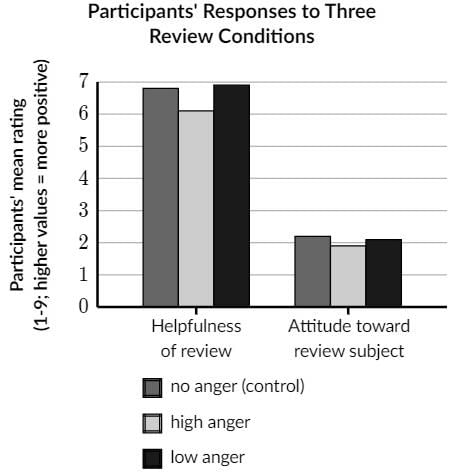
Which choice best describes data from the graph that support the student's conclusion?

To monitor changes to glaciers in Switzerland, the government periodically measures them for features like total area of ice and mean ice thickness, which are then reported in the Swiss Glacier Inventory. These measurements can be used to compare the glaciers. For example, the Gorner glacier had ______
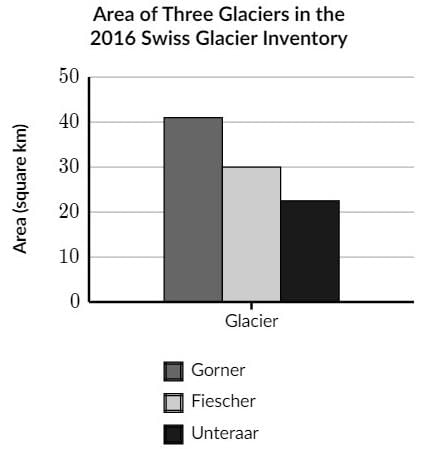
Which choice most effectively uses data from the graph to complete the example?

In the United States, firms often seek incentives from municipal governments to expand to those municipalities. A team of political scientists hypothesized that municipalities are much more likely to respond to firms and offer incentives if expansions can be announced in time to benefit local elected officials than if they can't. The team contacted officials in thousands of municipalities, inquiring about incentives for a firm looking to expand and indicating that the firm would announce its expansion on a date either just before or just after the next election.
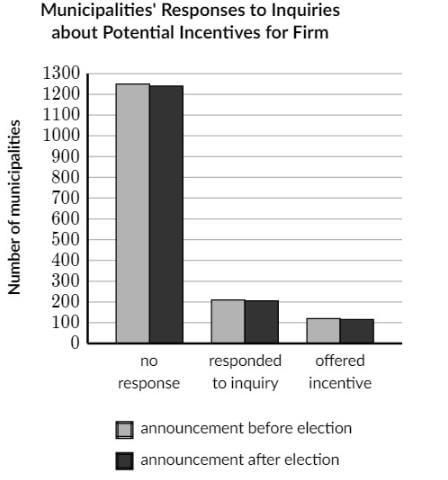
Which choice best describes data from the graph that weaken the team's hypothesis?

To investigate the influence of certain estrogen-responsive neurons on energy expenditure, biologist Stephanie Correa et al. treated female and male mice with either saline solution or clozapine-N4-oxide (CNO), which activates the neurons. Monitoring the activity levels of the mice by measuring how frequently the animals broke infrared beams crossing their enclosures, Correa et al. found that the mice in their study showed sex-specific differences in response to neuron activation: ______
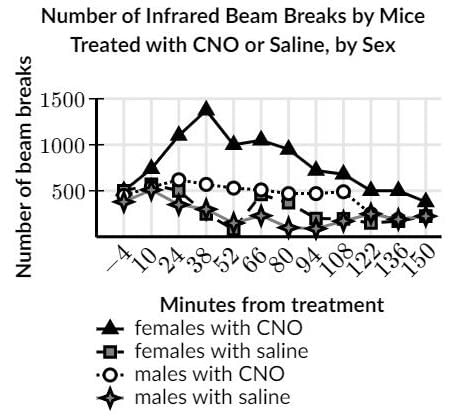
Which choice most effectively uses data from the graph to complete the assertion?
Electric companies that use wind turbines rely on weather forecasts to predict the maximum amount of power, in megawatt-hours (MWh), they can generate using wind so that they can determine how much they'll need to generate from other sources. When winds are stronger than they were forecast to be, however, the predicted maximum amount of electricity wind turbines could generate will be too low. For example, the graph shows that for the West region, the winds were ______
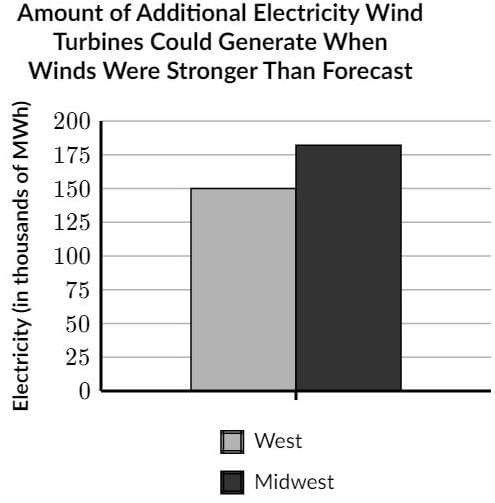
Which choice most effectively uses data from the graph to complete the example?














